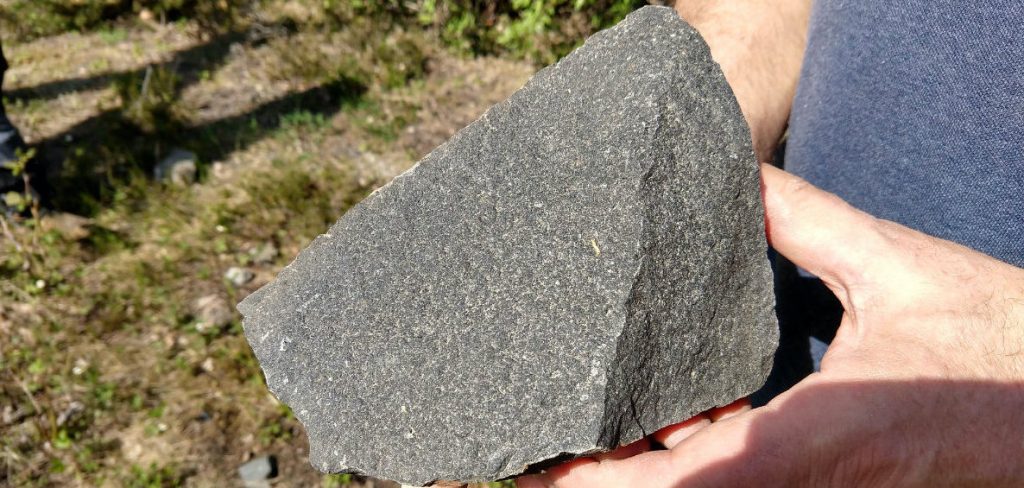Bäckerhällan
The borderland between older bedrock and younger magma chambers
At Bäckerhällan runs the border between a 1,900 million year old bedrock and Ragunda’s 1,500 million year old magma chambers. If you look out over Lake Gesunden to the west, you will see a flatter area where the bedrock is older. To the east, the landscape is more disturbed with many hills. There are the younger magma chambers that were formed from molten rock masses, magmas. As the magmas solidified, they formed rocks.
Syenite – a rare species of rock with a dusty appearance
Furthest to the west in the magma chamber at Bäckerhällan is a rock which is quite rare in Sweden - syenite. Syenite and granite stem from similar magmas. The difference is that the syenite contains less of the mineral quartz.
Syenite contains the mineral feldspar making it appear somewhat dusty. The black grains are usually the mineral hornblende, but may also be pyroxene.

Granite - a very common rock
A bit further east there are hybrid forms of syenite and the redder rock granite. Granite is one of our commonest rocks. Depending on what minerals it contains, granite varies in colour. Mostly however it is light in colour with a hint of red.
Granite contains a lot of quartz that may be white, grey or darker. It also contains red or white feldspar as well as black biotete and hornblende.

Rapakivi granite – a rare granite that crumbles easily
Further to the east the granite changes in character. Here is a remarkable kind of granite, rapakivi granite. The rapakivi granite is odd in appearance. Scientists have different theories for this but there is no consensus.
The rock is most often meaty red with large crystals and a yellow-white shell. The colour of the crystals and the shell stems from two kinds of the mineral feldspar. The semi-transparent, grey grains are the mineral quartz.

Rapakivi means rotten or dirty stone
The word rapakivi is Finnish and refers to the two words ‘rapa’ meaning rotten or dirty, and ‘kivi’ that means stone or rock. The name refers to its character since rapakivi granite is easily worn down by water, wind and ice, it crumbles. In, Sweden however, rapakivi granite is rare. In this country there are two major findings of it, in Ragunda and Nordingrå. Nowhere else in the country are you able to study the rapakivi granite as well as in Ragunda.
Gabbro – a dark rock worth mining
Even further east there is the dark rock gabbro. The light grains in the gabbro are the mineral plagioclase. The dark mineral consists of pyroxene and amphibole.
Gabbro is a valuable type of rock and may well be worth mining. It is often used in constructions.

More information
Sites to visit on Theme Continental Drift
More site photos



Places to visit nearby
Practicalities
Accessibility
See Accessibility.
Activities
Stop for a break and enjoy the fine views over the Lake Gesunden. See also Activities in Ragunda.
Eating and drinking
Missing on site. See instead Eating and drinking in Ragunda.
Accommodation
Missing on site, but various options are available nearby. See Accommodation in Ragunda.
Getting here
SWEREF 99 TM N: 7 001 782 E: 550 649
WGS84 N: 63,141777° E: 16,004836°



